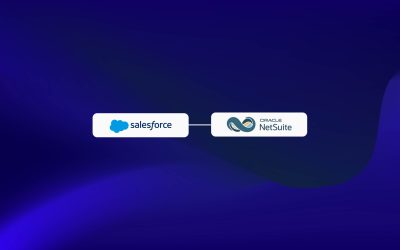From Plan to Profit in One Quarter
This plan outlines how to efficiently optimize your NetSuite environment.
A successful optimization initiative is not an endless, undefined project. It is a focused, 90-day sprint with clear phases, concrete deliverables, and measurable business outcomes. This document outlines Trajectory’s proven 30/60/90-day operating plan, designed to move your organization from assessment to tangible ROI within a single business quarter. This is your guide to overseeing a project that delivers on its promises of faster, cleaner, and lower-cost operations.
Phase 1: Days 1-30 / Stabilize & Capture Quick Wins
The goal of the first month is to stop the bleeding and build momentum by delivering highly visible improvements that reduce manual work and improve data quality immediately.
- Weeks 1-2: The NetSuite Health Check & Triage
- Activities: Our team conducts structured process interviews with key stakeholders in finance, sales, and operations. We perform a technical audit of your configuration, saved searches, dashboards, and code inventory.
- Objective: To move from anecdotal complaints to a data-driven diagnosis of your key pain points.
- Weeks 3-4: Quick Win Execution
- Activities: Based on the Health Check findings, we execute a list of pre-approved, high-impact fixes. This typically includes rebuilding the top 5 most critical (and broken) saved searches, implementing 3-4 crucial data validation rules to prevent bad data at the source, and deploying an “Exceptions Dashboard” for managers to monitor issues in real-time.
- Objective: To deliver immediate relief to end-users and provide leadership with a trusted, forward-looking view of operational health.
- Key Deliverables at Day 30:
- An Annotated Risk/ROI “Heat Map”: A visual guide showing which processes carry the most risk and offer the greatest opportunity for improvement.
- A “Top 10” Quick Fix List: Documenting the changes made and the immediate impact.
Baseline KPI Dashboard: Establishing the starting-point metrics for DSO, order processing time, and manual reconciliation hours.
Phase 3: Days 61-90 / Scale & Future-Proof
The final month is dedicated to scaling the gains, empowering users with next-generation tools, and establishing a long-term strategic roadmap.
- Weeks 9-10: Enhancing User Experience & System Stability
- Activities: We deploy a pilot of our conversational AI support assistant to a target user group (e.g., the AP or AR team). In parallel, our technical team hardens critical integrations with retry-safe architecture patterns to prevent data-sync failures.
- Objective: To improve user self-sufficiency, reduce support ticket volume, and ensure the reliability of your connected systems.
- Weeks 11-12: Strategic Refactoring & Handover
- Activities: We refactor the top 1-2 highest-risk scripts identified during the code analysis in Month 2. We then consolidate all project learnings into a final document and a strategic roadmap outlining recommended initiatives for the next 6-12 months.
- Objective: To proactively eliminate technical risks and provide you with a clear, long-term vision for continuous improvement.
- Key Deliverables at Day 90:
- AI Assistant Pilot Report: Metrics on user engagement and ticket reduction.
- Integration SLA Metrics: Performance and reliability benchmarks for key data flows.
- Operational Guide: A complete guide for managing the newly optimized processes.
Strategic 6-12 Month Roadmap: A prioritized plan for your next phase of optimization.
Managing the Engagement: Resources & Risk Mitigation
A successful sprint requires the right team structure and a proactive approach to risk.
- Typical Engagement Model:
- Execution Pod: A dedicated team including a Project Manager, NetSuite Architect, Developer, and specialist resources (e.g., Data Engineer, AI Specialist) as needed.
- Governance: Weekly/bi-weekly check-ins with executive sponsors to review progress against KPIs and a clear change management protocol.
- Key Risks & Mitigation Strategies:
- Risk: Breaking critical customizations during refactoring.
- Mitigation: Our process mandates automated code analysis, thorough testing in dedicated staging environments, and formal user acceptance testing (UAT) before deployment.
- Risk: Change resistance from end-users.
Mitigation: We start with role-based pilots for new technology and provide targeted training sessions focused on “what’s in it for me.”
Your First Step
In 90 days, you can fundamentally change the ROI of your NetSuite investment. By following this structured sprint, you can move from a state of reactive firefighting to one of proactive, data-driven optimization.
The journey begins with the NetSuite Health Check. Let’s schedule a call to scope your Day 1-30 plan and start building the business case for transformation.
Contact Trajectory today to book your initial assessment and launch your 90-day optimization plan.



